The Animals
East African Crowned Crane
General Info
Common Name: East African Crowned Crane or Grey Crowned Crane
Scientific Name: Balearica regulorum
Physical Appearance: The body plumage is a grey gradation from light to dark. The crown contains stiff, golden feathers and the sides of the face are red with a white cheek patch. They have a bright red throat pouch, or “gular sac”, used for vocalization. Males may be larger but otherwise identical to females.
Length/Weight: Both sexes are approximately 3 feet tall, males may be larger. Both sexes weigh approximately 7 lbs.
Lifespan: Up to 20 years in the wild, 40 years in captivity.
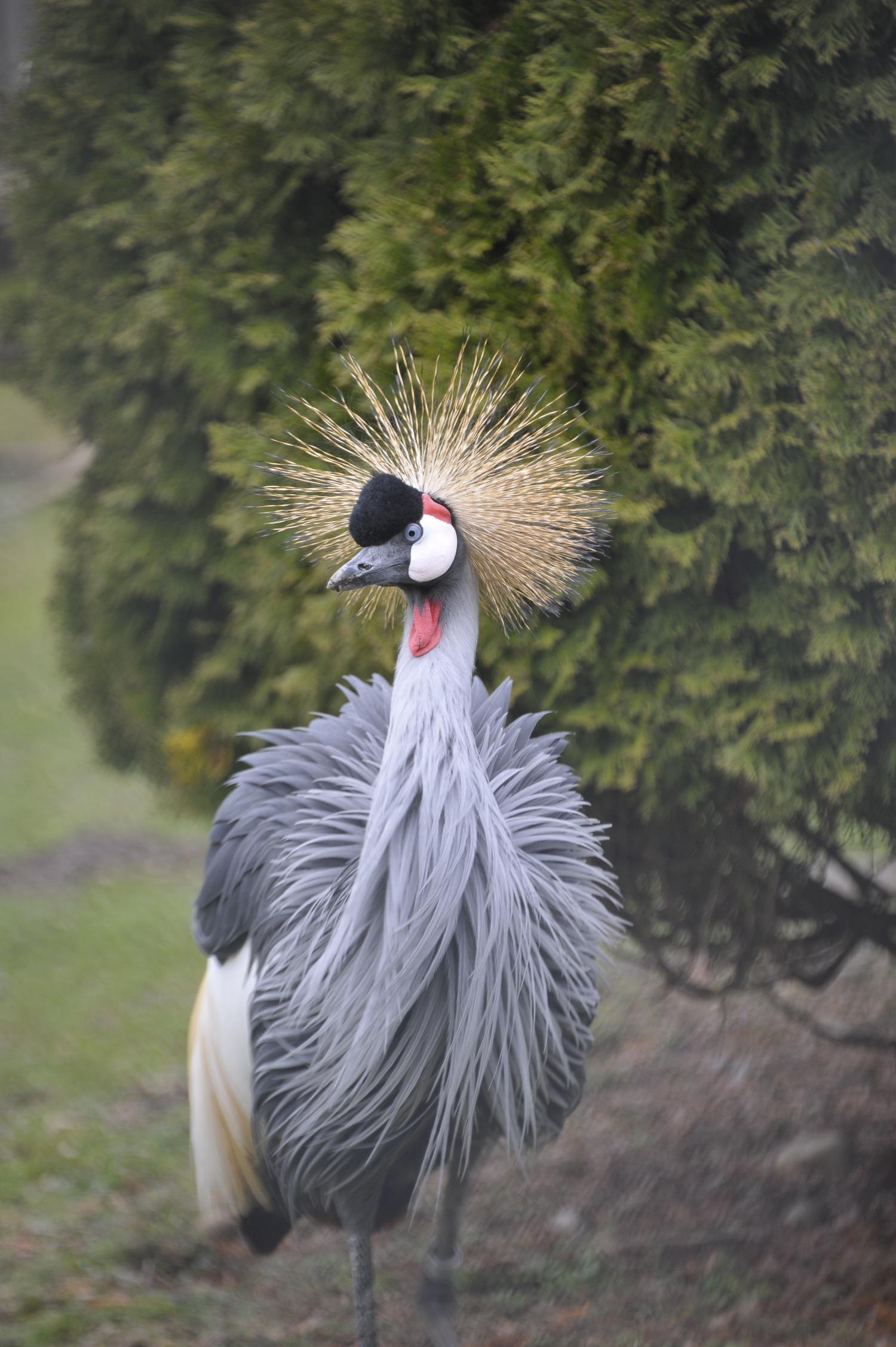
Environment
Range: Eastern Africa; eastern DR Congo, Uganda, Kenya, and Tanzania. Southern Africa; Zambia, Zimbabwe, Botswana and a grouping in South Africa.
Habitat: Inhabits wetlands, riverbanks, open riverine woodland, shallowly flooded plains with adjacent grasslands, open savannas, and agriculture lands.
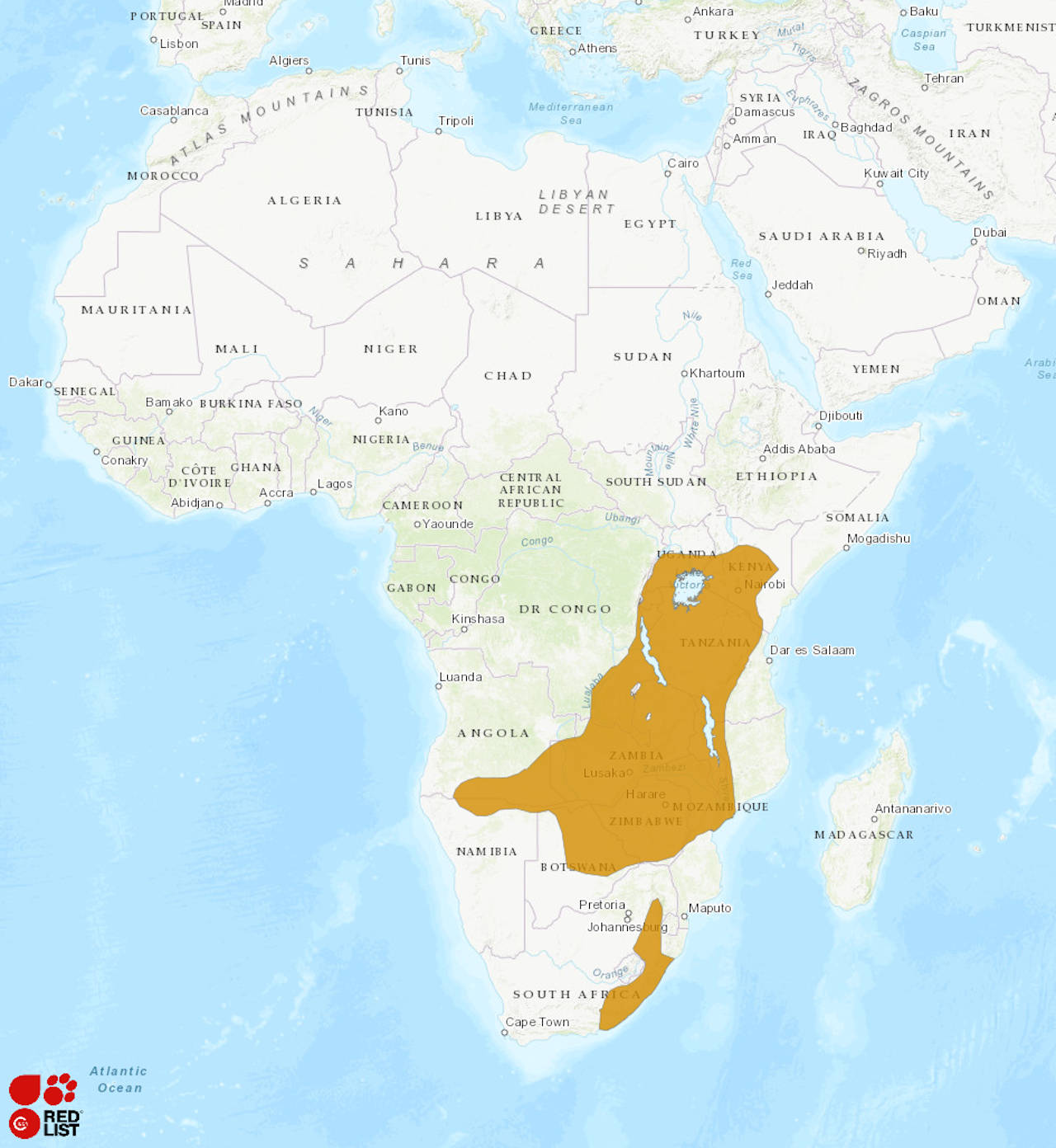
Diet
Omnivores: Plant seeds, grains, agricultural pulses, nuts, insects, frogs, lizards, small fish, eggs, worms, small mammals, and snakes. They prefer to forage in short to medium height grasslands and will also forage in agricultural crops.
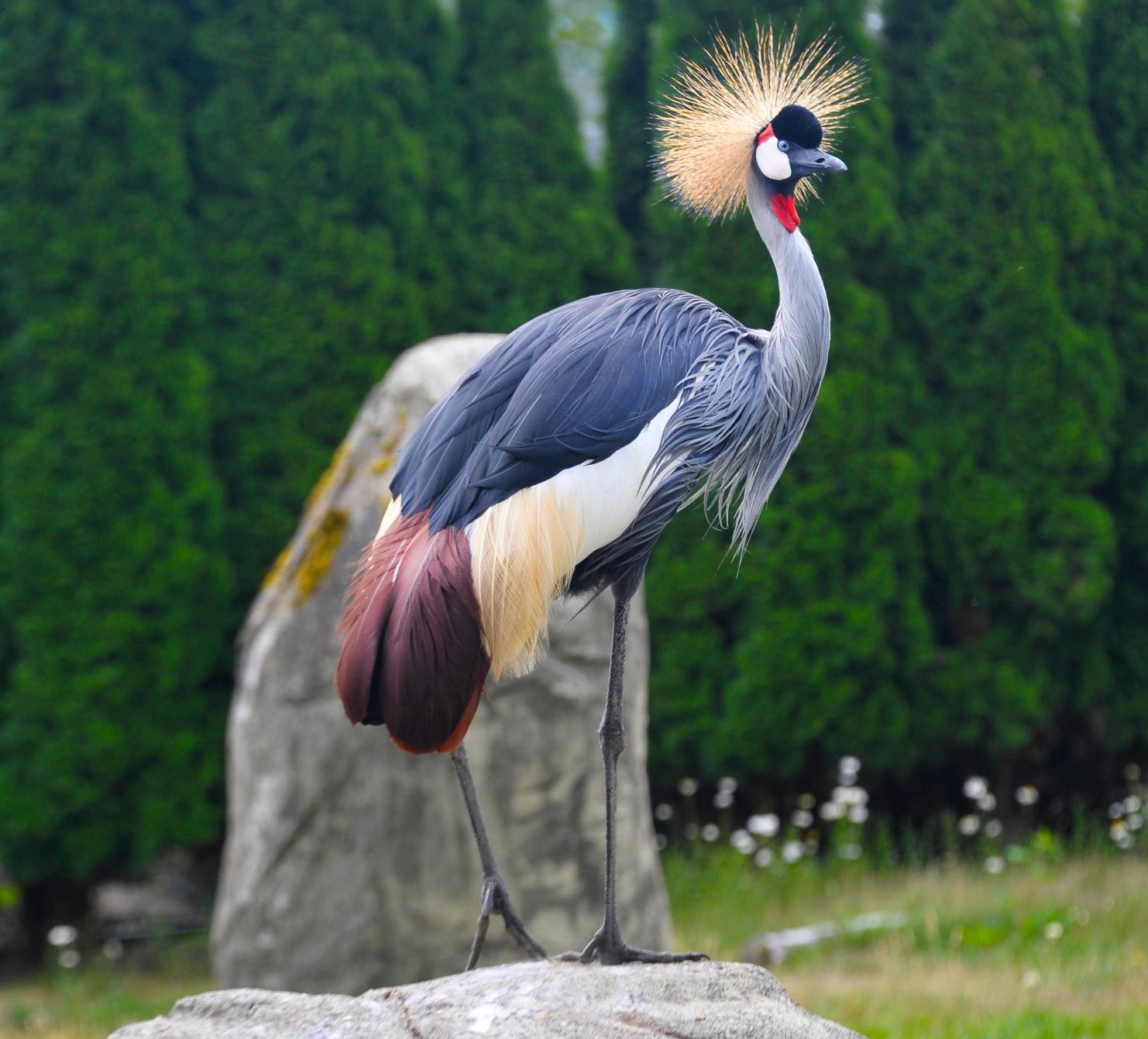
Reproduction
They will lay two to three bluish-green eggs which are incubated for 28-31 days by both the female and male. Both parents care for the young. Flight stage is reached by the young after about 90-120 days depending on nutrition. Even within large flocks, the birds can be seen to move about in pairs, suggesting a prolonged pair bond. Within such flocks, displays are not infrequent, and mutual preening, especially of the neck feathers, has also been observed.
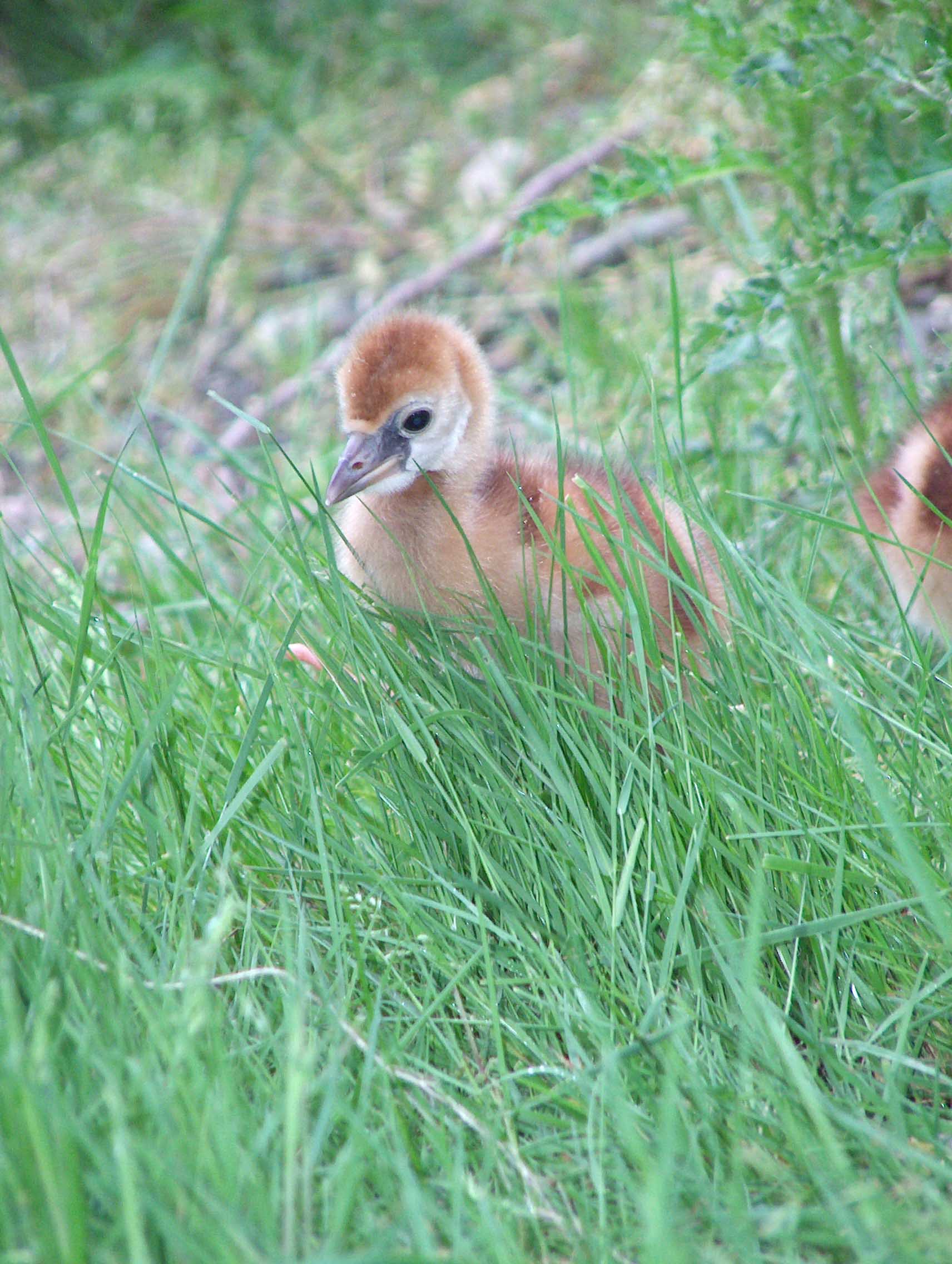
Conservation
Status:
Listed on IUCN: ENDANGERED
Population Trend: DECREASING
Efforts:
Wetland conservation projects occurred in Kenya in 2014, with some captive breeding populations established. Rwanda (Rugezi Marsh region) has implemented multiple conservation efforts backed by the International Crane Foundation. Ex: A children’s book was designed to educate the children in the area to not remove eggs from the nests.
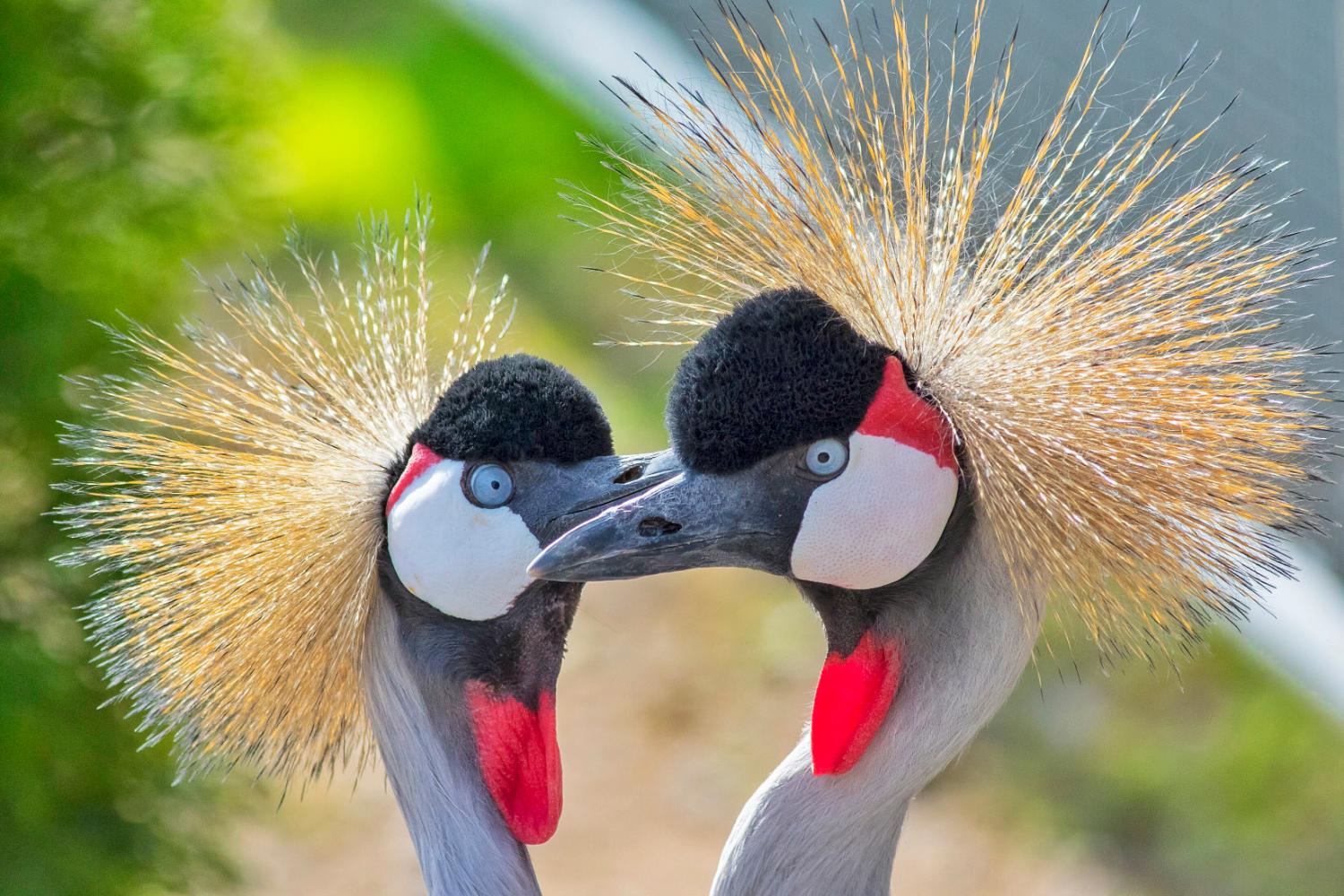
Important Facts
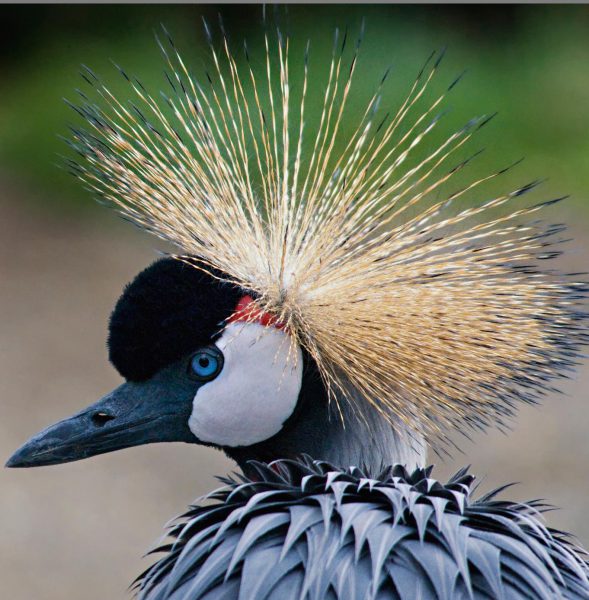
East African crowned cranes will stamp their feet as they walk to flush out insects to eat.
Known as “Imisambi” in Rowanda, which means “crane” in Kinyarwanda.
East African crowned cranes are also known as Grey Crowned Cranes and are the national bird of Uganda.
Sources:
Magic of Cranes
IUCN: REDLIST
International Crane Foundation



